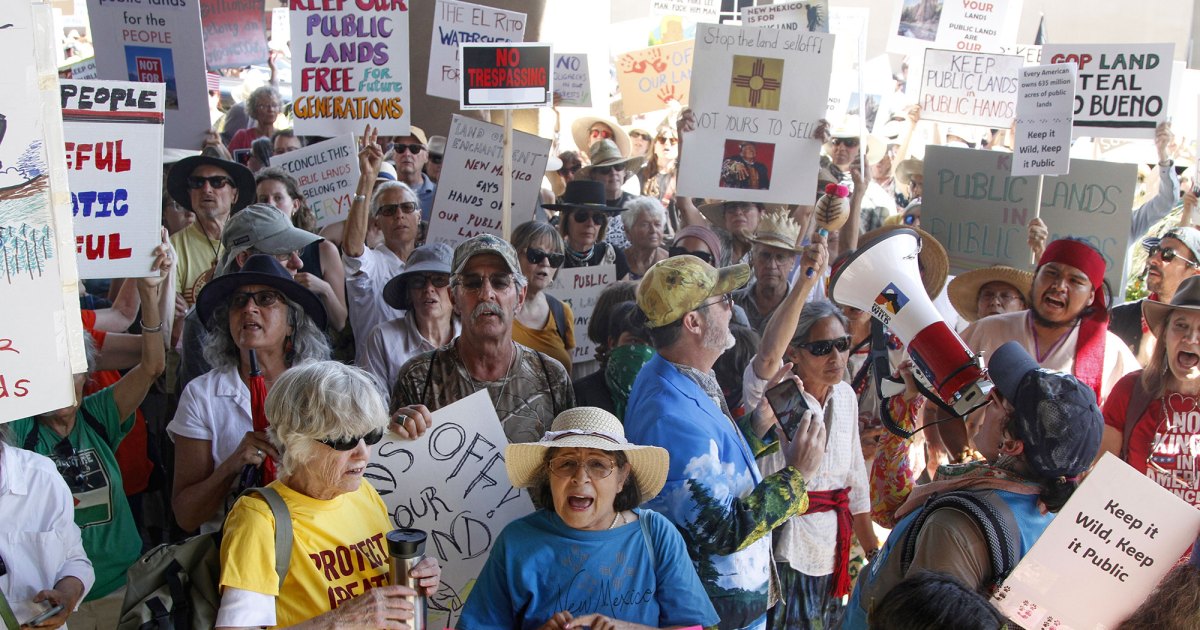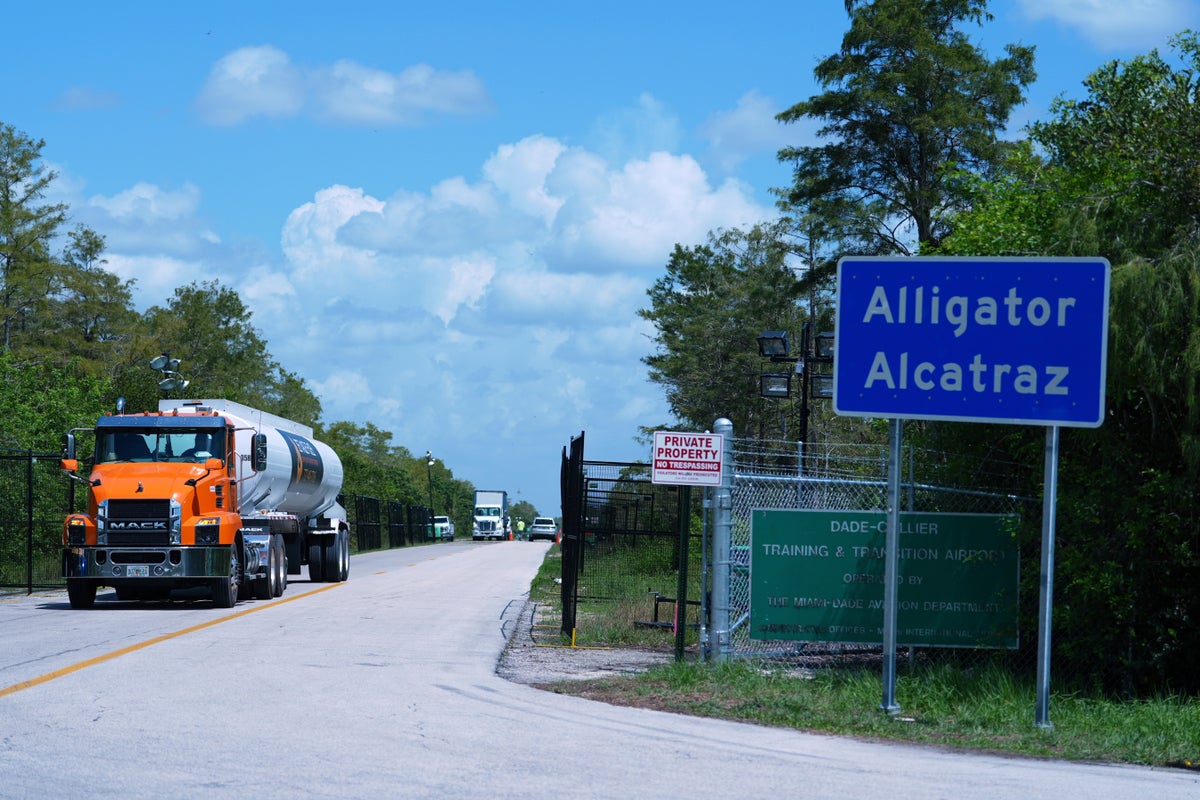This story was originally published by High Country News and is reproduced here as part of the Climate Desk collaboration.
In June, a long-standing effort to sell off massive chunks of federal land grew closer to fruition than ever before when a provision mandating such sales was slipped into President Donald Trump’s “One Big Beautiful Bill.”
The bill passed, and selling public lands easily could have followed. But it didn’t, largely due to a fierce public outcry led not just by pro-public land progressives but by a surprisingly broad coalition that included horseback riders, ATVers, backpackers, birdwatchers, hunters, anglers and tribal nations—even podcaster Joe Rogan.
“The ones that want to see this sold only have to win once. And those of us that want to keep public lands public…have to win every time.”
Months later, pieces of that coalition continued to hold together. But not all of it, said Land Tawney, co-chair of American Hunters and Anglers, citing the administration’s recent attempts to overturn the Roadless Rule, which restricts road construction and logging on nearly 60 million acres of land managed by the US Forest Service.
“There’s a lot of people who aren’t speaking up about the Roadless Rule that did speak up about public lands,” he said. “So as far as (the coalition) pivoting to other things, I think it depends on the issue.”
David Willms, the National Wildlife Federation’s associate vice president for public lands, has even more to say. Willms spent over a decade working on land issues in the Wyoming attorney general’s office and served as former Gov. Matt Mead’s natural resources policy advisor. He recently spoke with High Country News about how the effort to sell public lands made it this far, why it faltered, and where we go from here.
This interview was edited for length and clarity.
Why didn’t the provision to sell public lands make it into the final version of the One Big Beautiful Bill?
It could be for a few reasons.
It was written in a way that called for the sale of a certain percentage of lands in Western states under the guise of affordable housing. But these lands weren’t really tied to places that needed affordable housing. And it was drafted in a way where you didn’t know who could purchase the land.
A second piece of it is how quickly it came about. There was really no opportunity for the public to engage in this. There wasn’t even a hearing.
And the third thing is: It became crystal clear that the public as a whole, from the far right to the far left and everything in between, does not support selling public lands, particularly for undefined development.
It’s hard to find anything right now that the majority of Americans can agree on. Do you think this coalition of people who opposed sale of public lands will hold to help manage public lands in the longer term?
Here’s my hope: I don’t believe that the existence of public lands is inherently political, and I think this whole process bears out that the public at large deeply cares for their public lands and wants to be able to have access to those lands.
When it comes to how public lands are managed, that becomes more political. So I hope that this same coalition is willing to come to the table and say, “We care about our public lands, and we want to see them exist in perpetuity for future generations to enjoy. That means having hard conversations about how we manage them.”
And maybe if we have that as our centerpiece, of keeping public lands in public hands, that it enables us to work together better on some of the harder issues.
What do you think it would take for that to happen? For all these parties to come together and continue to engage on all these other issues surrounding public lands?
That’s the million-dollar question that I don’t have a million-dollar answer to.
What should people who want public lands to remain public watch out for over the next few years or decades?
Watch for proposals that are more place-based rather than national in scope. Work with folks to make sure that the proposal is balancing all different needs.
On the executive branch side, I’d suggest watching the Federal Land Policy Management Act, because some of the lands that are on the “suitable for disposal” list may have been put on that list 30 years ago, when they were deemed difficult to manage because nobody knew how to access them. But with new technologies like onX (a popular GPS mapping application), many of those lands are accessible, and some of these parcels are really high-quality habitat for wildlife.
And then you have to watch for county commissions and state legislatures passing resolutions of support for transfers or sales of public lands. Those are elected officials representing their constituents. If enough do that, it’ll send the signal to Congress that there’s a lot of local support for sales or transfers.
There are also types of policies that could reduce the value of lands in a way to shift support away from ownership. So monitor those policies dictating how lands are managed and the resources that are allocated to agencies.
That’s a lot to keep track of. Do you think people will get exhausted and stop fighting?
I don’t think so. There’s a recognition that the ones that want to see this sold only have to win once. And those of us that want to keep public lands public for future generations have to win every time.
Once the lands are sold, they’re gone. You can’t just wait for the next election cycle to “fix it.” And that’s what keeps people motivated.














